Japanese beer has become more than just a refreshing drink, it’s a reflection of Japanese culture, craftsmanship, and innovation. From the iconic labels like Asahi and Sapporo to the rapidly growing craft beer scene, Japanese beer offers a unique experience to both locals and global enthusiasts. Let’s dive into the rich history, popular brands, and rising trends that make Japan a major player in the global beer industry.
The Culture of Beer in Japan
Beer holds a special place in Japanese social life. Whether it’s an after-work drinking session known as nomikai or a family barbecue, beer is often the beverage of choice. Japanese bars and eateries, especially izakaya, offer an extensive selection of draft, bottled, and canned beer to suit any palate.
Although beer was introduced to Japan in the 19th century, its popularity soared after World War II. Today, beer consumption in Japan remains one of the highest in Asia, with millions enjoying both mass-market and specialty brews.
Over the decades, beer has become deeply woven into the social fabric of Japan. It’s the go-to drink for welcoming new employees, celebrating milestones, or simply unwinding after a long day. The act of clinking glasses while saying “Kanpai!” is more than just a cheer, it’s a ritual of connection and camaraderie. In urban centers like Tokyo and Osaka, beer gardens spring to life during the warmer months, drawing crowds looking to enjoy a cold brew in open-air settings. Meanwhile, local festivals and seasonal events often feature regionally brewed beers, showcasing the diversity of Japan’s brewing landscape.
This strong cultural affinity has also led to the emergence of beer as a symbol of hospitality. Offering a cold Japanese beer to a guest is seen as a warm gesture, reflecting both modern tastes and traditional values. With such a deep-rooted presence in everyday life, it’s no surprise that Japanese beer continues to thrive in both domestic and international markets.
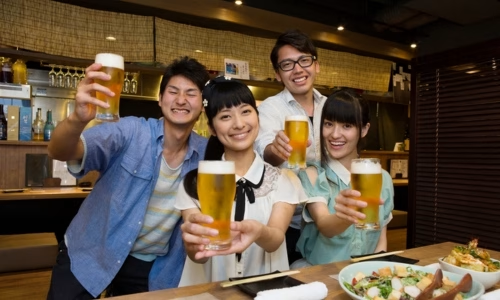
Best Japanese Beer Brands You Should Know
When it comes to well-known Japanese beer labels, several iconic names consistently lead the market thanks to their distinct flavor profiles and deep-rooted history.
Asahi Super Dry, launched in 1987, revolutionized the industry with its “karakuchi” (dry) style. Its clean finish and subtle bitterness make it a staple for those seeking a crisp, thirst-quenching lager, especially popular alongside grilled dishes and izakaya fare.
Sapporo, often recognized by its signature star logo, is Japan’s oldest beer brand, dating back to 1876. This brewery is celebrated for producing smooth, full-bodied beers with a slightly bitter aftertaste, making it a versatile option for casual drinkers and beer enthusiasts alike.
Kirin Ichiban sets itself apart through its unique brewing technique. By using only the first wort extraction, known as the Ichiban Shibori method, it creates a refined, silky beer with a malt-forward character and minimal bitterness. This meticulous process reflects Kirin’s commitment to quality over quantity.
Suntory, while renowned globally for its award-winning whiskies, also commands attention in the beer market. Its flagship, The Premium Malt’s, offers a richer aroma and creamy head, thanks to its use of carefully selected European hops and a distinctive double decoction method.
These standout Japanese beer brands have established a solid presence both within Japan and overseas. With expanding exports and increasing availability in global supermarkets and specialty stores, they continue to introduce Japan’s brewing excellence to an international audience.
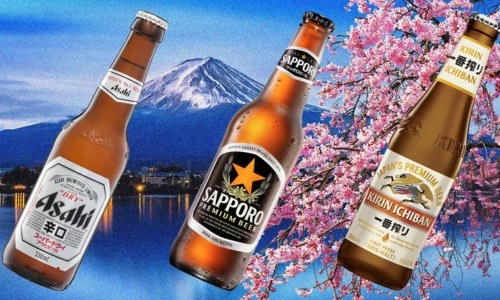
The Growth of Japan’s Artisanal Beer Scene
Beyond the major players, Japanese craft beer is booming. Small, independent breweries are experimenting with bold flavors, local ingredients, and unique brewing techniques.
Some of Japan’s standout craft breweries are:
- Hitachino Nest Beer (by Kiuchi Brewery): Recognized for its owl logo and distinctive flavors like yuzu ale and white ale.
- Baird Beer: A Shizuoka-based brewery that emphasizes traditional brewing methods, unfiltered and unpasteurized beers.
- Kyoto Brewing Co.: Combines Belgian techniques with Japanese ingredients to create elegant, seasonal beers.
Events such as the Great Japan Beer Festival and Tokyo Beer Week showcase the best of the craft beer movement, helping it gain a growing following both in Japan and abroad.
Distinctive Flavors and Styles in Japanese Beer
What sets Japanese beer types apart is their subtle balance and creative flavor profiles. While lagers dominate the market, other varieties are gaining popularity:
- Rice lagers: Light and smooth, often used in major commercial brands.
- Yuzu-infused ales: Featuring the citrusy freshness of Japanese yuzu fruit.
- Green tea beers: A fusion of brewing and traditional Japanese ingredients.
- Sakura (cherry blossom) beers: Released seasonally, offering floral notes and a pinkish hue.
These distinct flavors contribute to the uniqueness of the Japanese beer industry, making it a paradise for beer explorers.
Matching Japanese Beer with Traditional Dishes
One of the reasons Japanese beer enjoys such popularity both at home and abroad is its exceptional compatibility with food. Thanks to its crisp finish, moderate bitterness, and refreshing character, most Japanese lagers and ales enhance rather than overpower a meal, making them a staple at izakayas and dinner tables across the country.
When it comes to food pairings, Japanese beer truly shines. Light, dry lagers like Asahi Super Dry or Sapporo Premium are ideal companions to delicate dishes such as sushi and sashimi, allowing the flavors of fresh fish and umami-rich soy sauce to take center stage. The clean, carbonated finish of these beers also helps cleanse the palate between bites.
For something heartier, pair a cold pint with tempura crispy, golden-fried vegetables or seafood. The beer’s fizz and subtle hops cut through the oiliness, balancing the dish beautifully. Likewise, grilled items like yakitori (chicken skewers) find a natural partner in a cold Japanese brew, especially malty lagers or amber ales that complement the savory tare sauce.
Spicy and rich dishes like ramen, particularly those with bold broths or chili heat, also benefit from beer’s cooling qualities. A smooth, chilled beer enhances the complexity of the dish without clashing with the spices.
In Japanese dining culture, the relationship between food and drink is deeply valued. Beer isn’t just a casual beverage, it’s a thoughtfully chosen element that elevates the entire meal. Whether you’re at a formal dinner or a late-night street stall, enjoying the synergy of Japanese beer and cuisine is an experience that reflects the country’s dedication to balance and harmony.
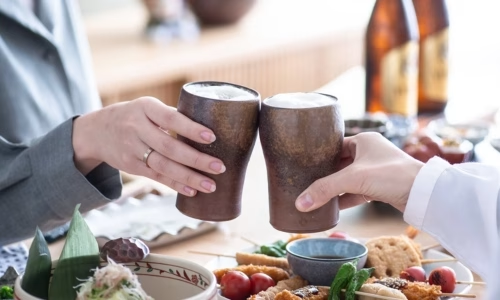
Where to Buy Japanese Beer
Looking to try Japanese beer outside Japan? You’re in luck.
- In Japan: Convenience stores like 7-Eleven, FamilyMart, and Lawson stock a wide range of beers. Supermarkets such as Aeon and Don Quijote offer both local and international brands.
- Outside Japan: Major online retailers, import shops, and Japanese grocery stores carry many imported Japanese beers.
- Online: Websites like Rakuten, Amazon Japan, and specialist distributors make it easy to order Japanese craft beer directly to your doorstep.
Drinking Etiquette and Legal Tips
If you’re planning to enjoy a cold Japanese beer while visiting Japan, it’s helpful to understand a few key customs. Drinking is a social ritual in Japan, and following etiquette shows respect for the culture, and the people you’re sharing a toast with.
Key Rules to Remember:
- Pour for others first: It’s customary to pour beer for your companions before serving yourself. Let someone else fill your glass, it’s part of the shared experience.
- Say “Kanpai!”: Always toast with a cheerful “Kanpai!” before enjoying your initial sit. It’s the Japanese equivalent of “Cheers!”
- Legal drinking age: The minimum legal age for drinking in Japan is 20 years old.
- Public drinking: While drinking in public spaces is technically legal, it can be frowned upon in certain settings like on trains or in quiet neighborhoods, use your judgment.
- Don’t drink and drive: Japan enforces a zero-tolerance policy for drinking and driving. Even one drink is too many, take a taxi or use public transport instead.
Respecting these traditions will not only enhance your experience but also help you connect more meaningfully with Japanese culture. Whether you’re sharing a bottle of Sapporo at an izakaya or sipping craft beer at a festival, a little etiquette goes a long way.
Why Japanese Beer Has Global Appeal
The global rise in Japanese beer popularity is no accident. Japan has mastered the balance between precision, artistry, and innovation in brewing. Every bottle and can reflects the country’s dedication to quality, whether it’s a mainstream lager or a small-batch Japanese craft beer.
From sipping a crisp Asahi in a Tokyo izakaya to enjoying a fragrant yuzu IPA at a bar in New York, beer lovers around the world are discovering the refined, approachable character of beer from Japan. The clean, smooth flavor profile appeals to a wide audience, making Japanese beer a standout on the international stage.
Whether you’re a casual drinker or a seasoned connoisseur, there’s a Japanese beer for you. With its growing export presence and increasing availability in restaurants, specialty shops, and online platforms, it’s no wonder this drink has earned its spot among the world’s best-loved brews.
Final Thoughts
From traditional brewing giants to a flourishing craft beer culture, Japanese beer reflects the perfect harmony of innovation, quality, and heritage. Whether you’re drawn to the crisp refreshment of an Asahi, the complexity of a Kyoto-brewed seasonal ale, or the novelty of sakura-infused beer, Japan offers something that resonates with every taste.
As global appreciation for Japanese cuisine and culture continues to rise, so too does the international love for its beer. So, whether you’re enjoying it at a Tokyo izakaya or discovering it abroad, Japanese beer invites you on a flavorful journey, one sip at a time.

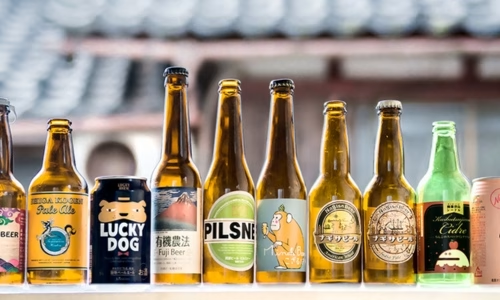


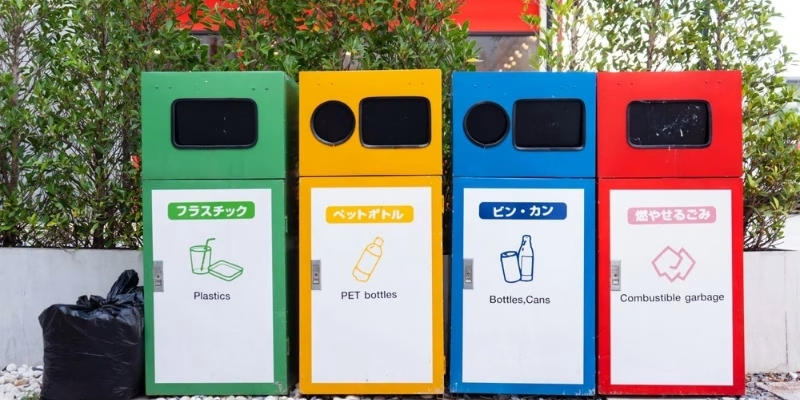

Leave a Reply